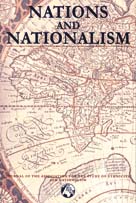Article contents
The natsyas of the Grodno region of Belarus: a field study
Published online by Cambridge University Press: 01 April 1999
Abstract
This research was conducted in 1993–4 in several peripheral kolkhoz villages in the north-west Belarus Grodno province, a religious (Catholic/Orthodox) and linguistic (Belarussian/Russian/Polish/Lithuanian) borderland. The members of the folk communities of this region conceive and categorise social reality differently than it is done by the members of a nationalised and urbanised society, according to religious, and not nation-state, criteria. People are divided by these criteria into natsyas, i.e. religious groups. There are two main natsyas: the Catholics (also called Poles) and the Orthodox (called Rus′ or Belarussians). The distinctive criterion for several natsyas is the language of a prayer: the Catholics pray in Polish and/or Lithuanian, the Orthodox in Old Church Slavonic and Russian. The terms Catholic natsya and Polish natsya (and similarly Orthodox natsya or Rus′ natsya) are synonymous. The language of everyday speech does not differentiate the natsyas; all the villagers speak Belarussian dialect or so called ‘plain language’.
The natsya, a concept specific of traditional folk societies, should not be confused with a ‘nation’, a political term of the modern world. None the less, the kolkhoz peasants of the region under study are confronted with a concept of ‘nation’. It results in a turmoil in their worldview and in confusion about their identity; what we see in the Belarussian villages is a process of change. The borderland where the material was collected seems an excellent field for the study of the process of the emergence of nations.
- Type
- Research Article
- Information
- Copyright
- © 1999 Association for the Study of Ethnicity and Nationalism
- 7
- Cited by




